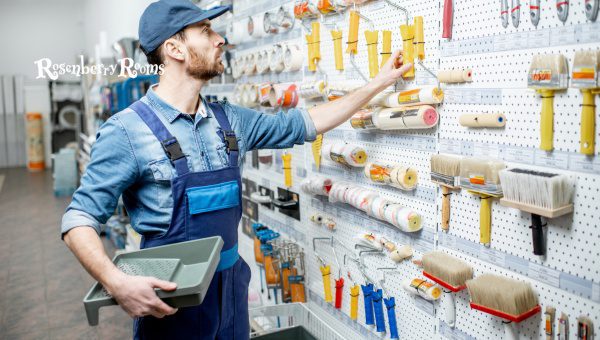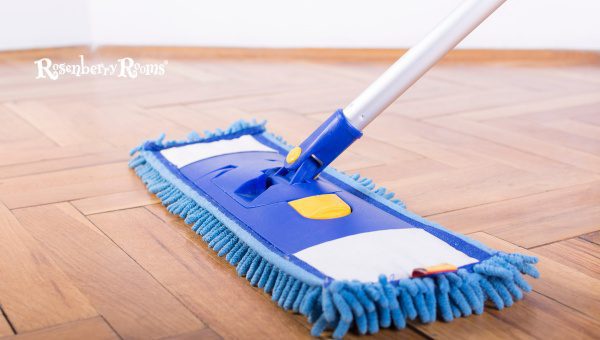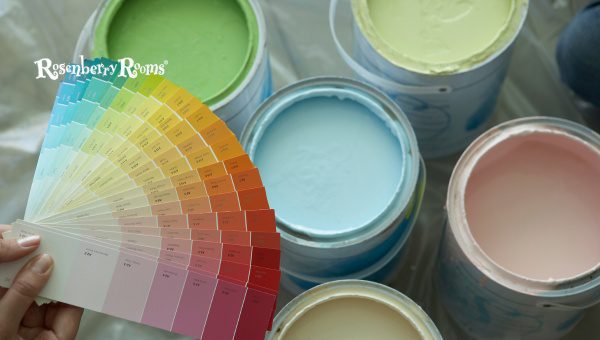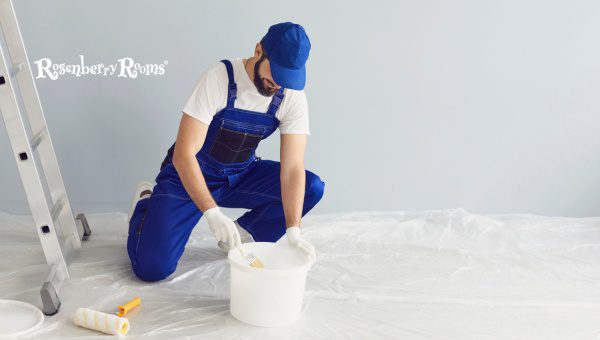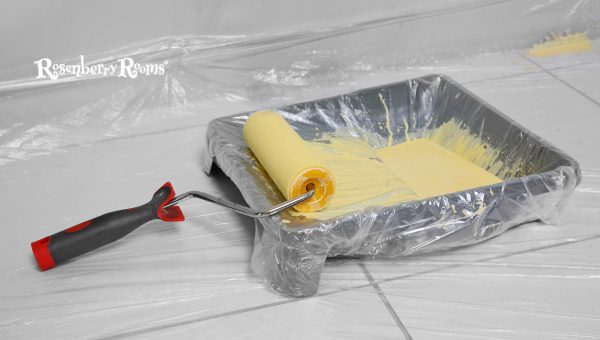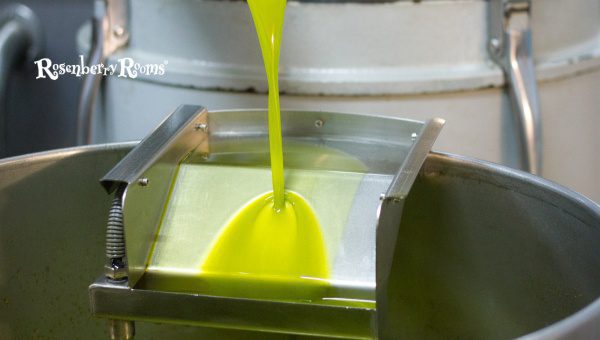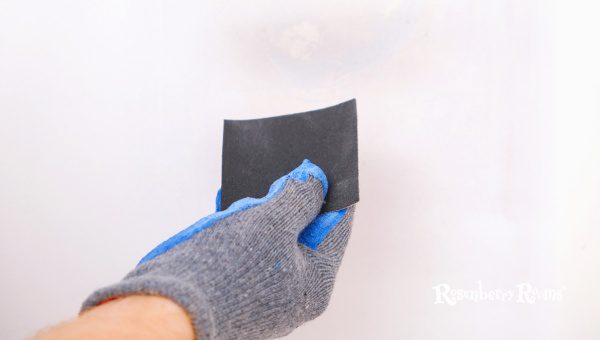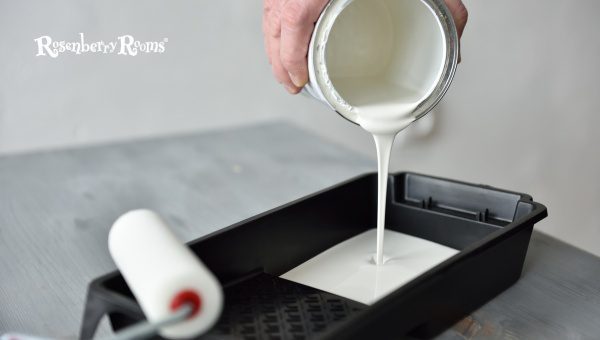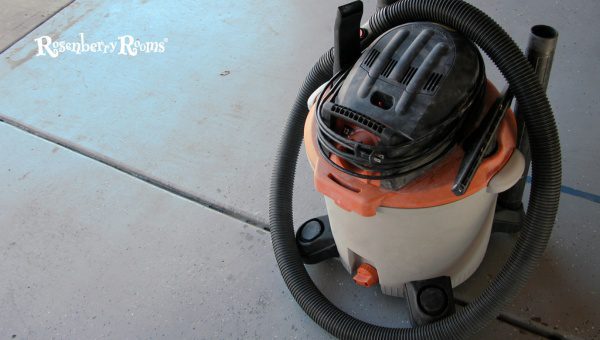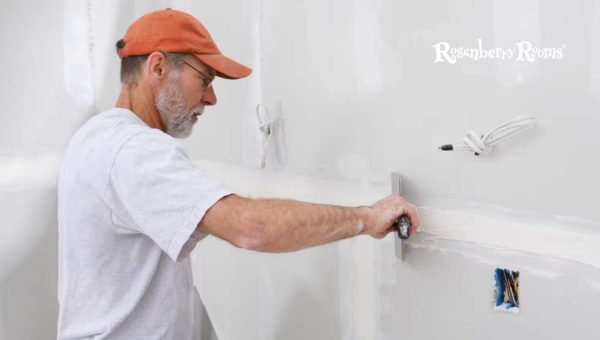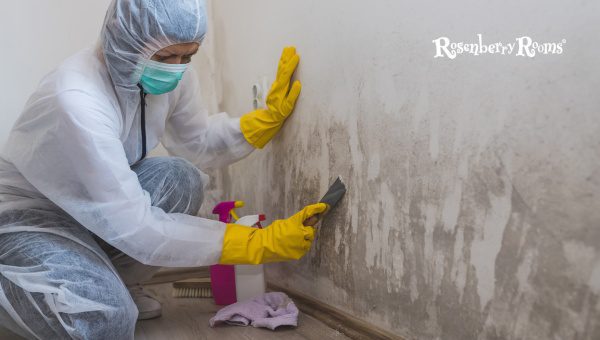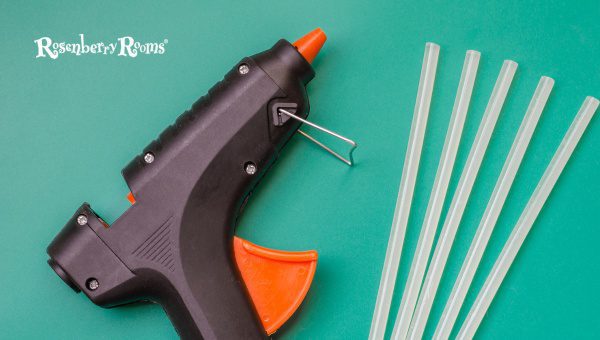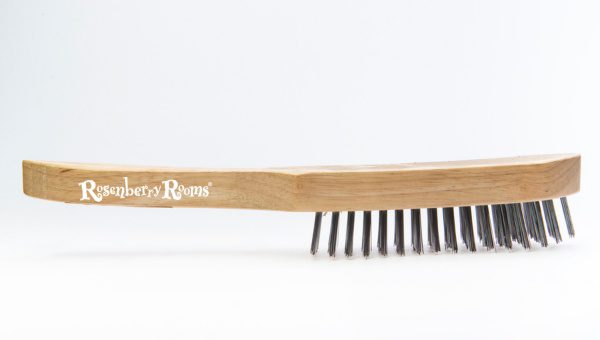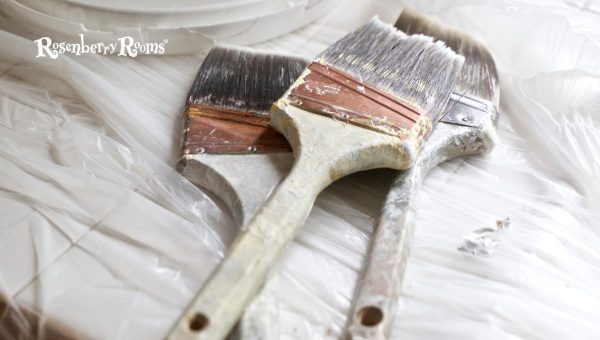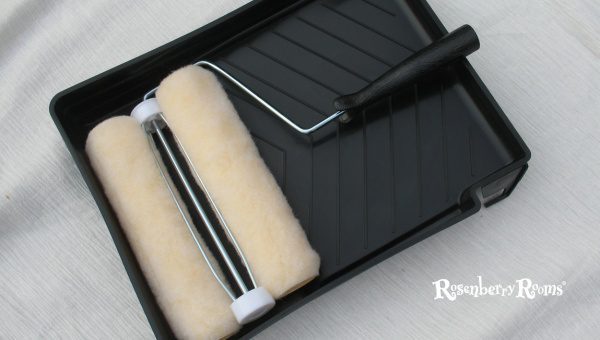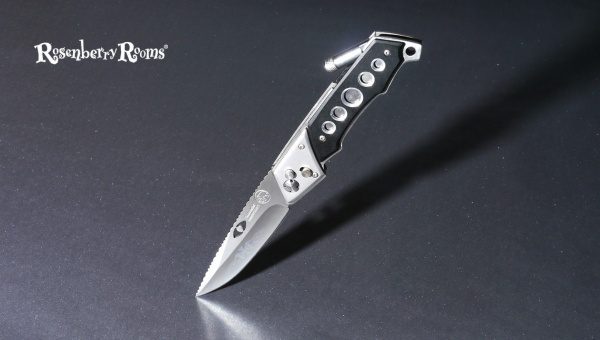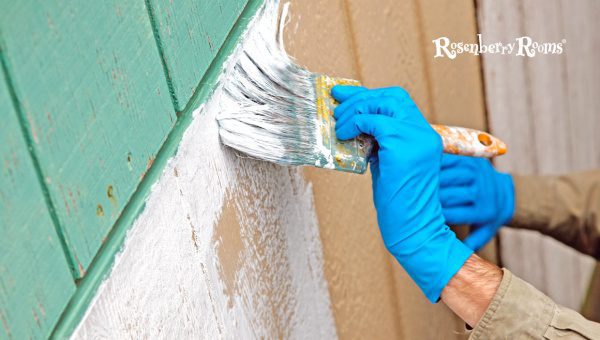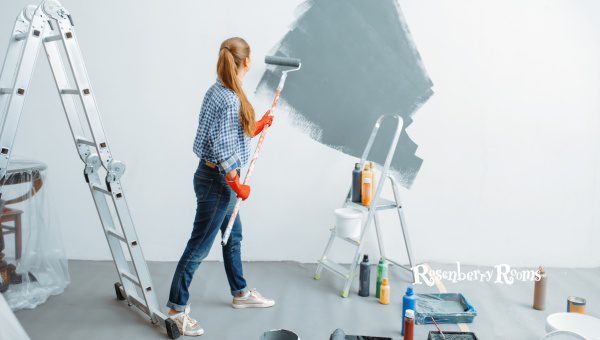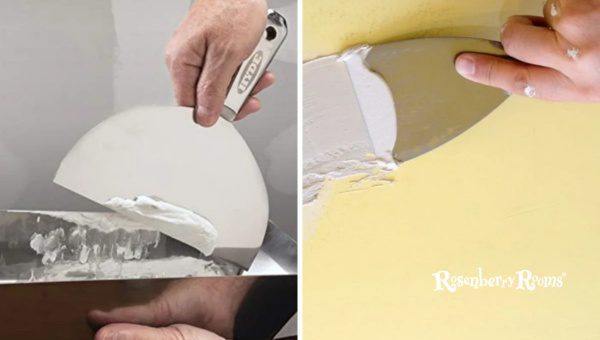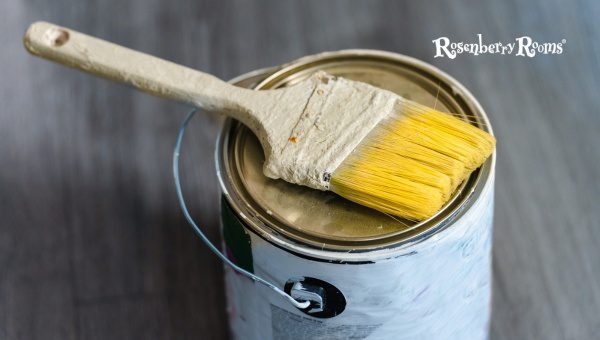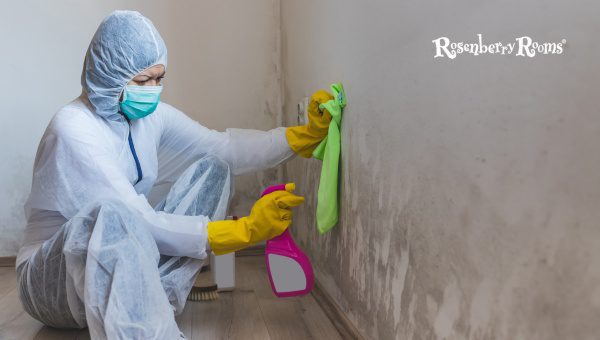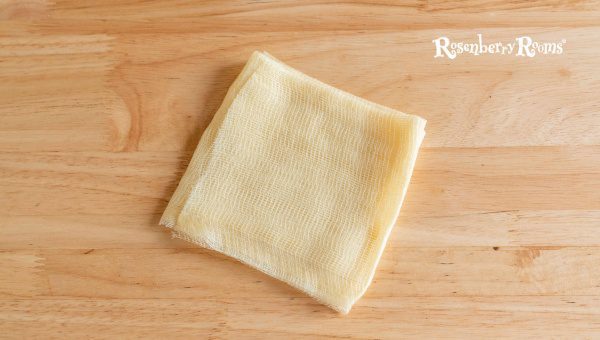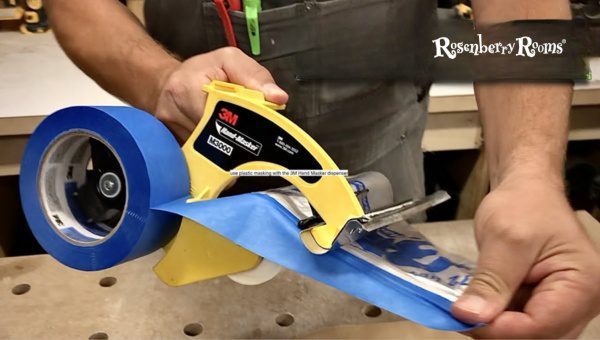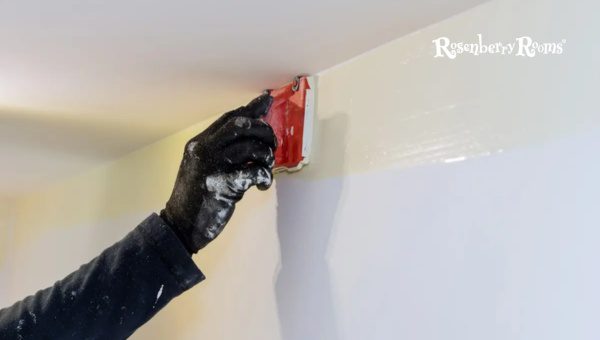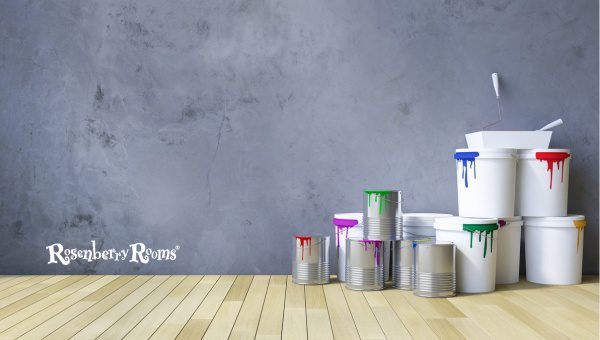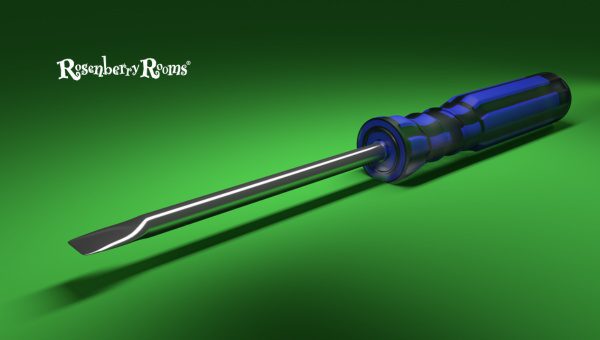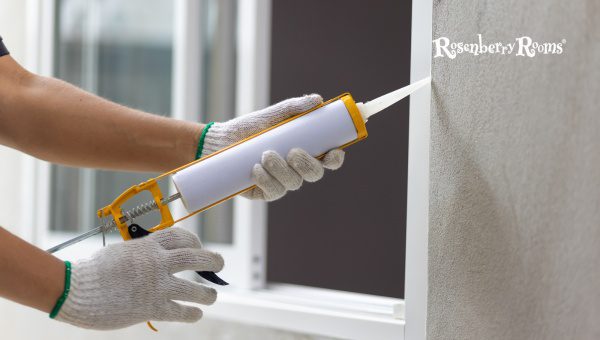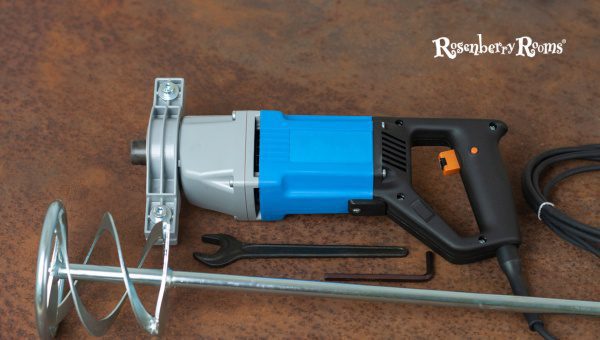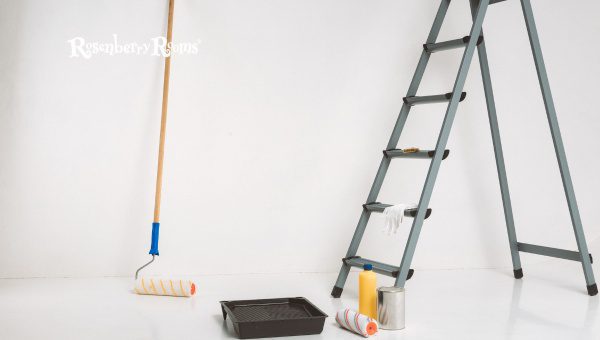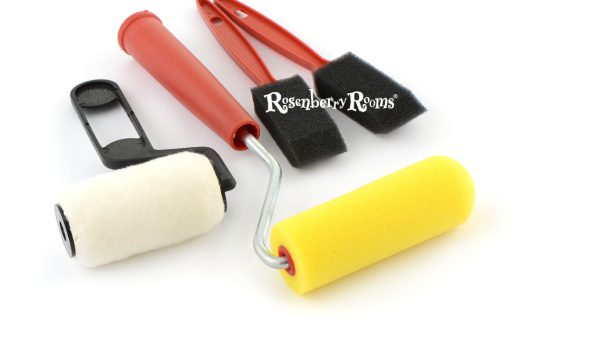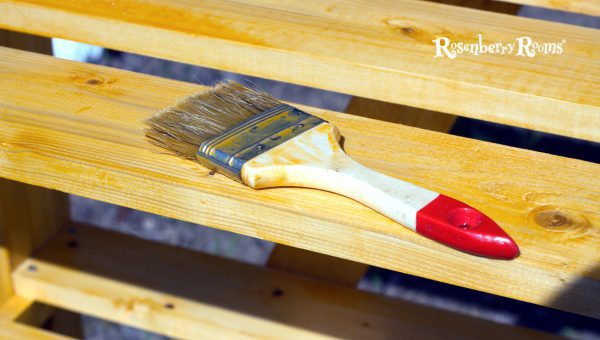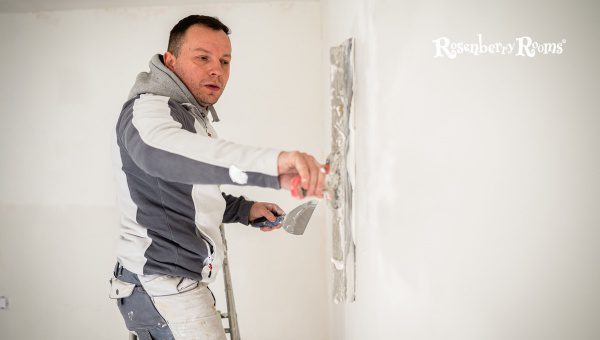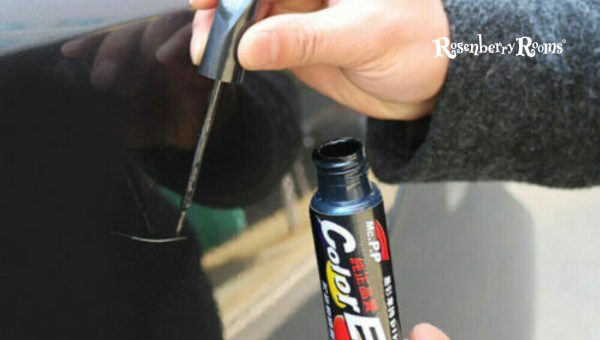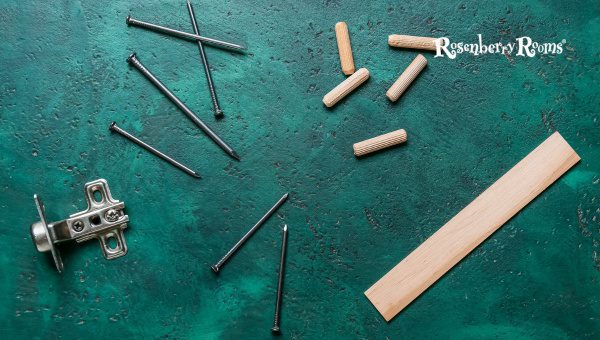A beautiful transformation occurs when you blend colors and strokes, turning a blank canvas into a work of art.
Whether you’re a seasoned professional or just starting in the world of painting, having the right tools to hand can make all the difference in your artistry. The same can be said for home improvement projects as well.
As a homeowner or DIY enthusiast, it’s always good to be well-equipped with excellent pro painting tools that make the process easier and yield highly satisfactory results.
Painting, whether it’s an artistic pursuit or a home improvement project, requires precise tools designed for distinct applications.
From innovative brushes to modern gadgets, many beautiful products are on the market today designed to take your painting ventures to new heights. Let’s dive in and talk about some of these essential pro painting tools that every artist or DIYer should have in their arsenal.
Why Are All Tools Essential for Pro Painting?
While it may come to some as a neophyte’s pastime, painting is both an art and a technical skill. Mastering this craft comes from understanding the variety of tools available and their specific uses.
Similar to how a gourmet chef needs different utensils for each culinary task, a professional painter also requires various specialized tools to deliver quality work. Here are essential reasons why:
- Variety of Textures: Different tools can lead to varying textures on your masterpiece. For example, brushes provide a smooth finish, while using sponges gives you more of a speckled look.
- Intricate Details: Some elements of painting require precision and detail. Italicized lettering or thin lines can only be accomplished with precision tips or fine liners; thus, the correct tool is handy.
- Efficiency & Saving Time: A vast canvas would take forever with just fine brushes. Broader strokes need larger brushes or rollers; detailed work needs smaller implements that provide control.
- Durability & Longevity: Professional-grade tools are designed to last under severe working conditions and multiple uses. Juxtapose this with essential equipment that might not be able to withstand similar circumstances.
In essence, using the appropriate tool not only simplifies the task but also ensures top-notch results, preserving your effort’s value long after the paint dries.
Also Read: Hand Painting Vs Spraying Cabinets [Which Is Best?]
45 Pro Painting Tools
When painting, having the correct tools can be the difference between an amateur and a professional finish. Let’s highlight some essential pro painting tools to understand their application better.
1. Sponge
An incredibly versatile tool in every painter’s arsenal is a simple sponge – but simplicity doesn’t equate to insignificance. Sponges can transform any ordinary paint job into a beautiful textured finish that cannot be achieved using traditional brushes or rollers.
- When paints are applied using a sponge, it creates a unique mottled effect that adds depth and character to your walls.
- In addition, sponges are excellent for blending hues seamlessly, especially for creating delicate color gradient effects.
- The sponge is also perfect for dabbing excess paint or water off your artwork to prevent streaks.
2. Mop
Now, you might wonder what a mop has to do with painting. Surprisingly, the mop does far more than clear spills in professional image.
- The mop is specifically beneficial when working on large canvases or walls as it helps quickly clean any paint drips without damaging the surrounding areas.
- A dry mop can efficiently dust off surfaces before applying primer or paint, thus ensuring nothing hinders smooth application.
- Moreover, specialized art mops allow artists to achieve soft transitions in their paintings by aiding pigment diffusion across larger areas.
3. Fanpainters Paints
Paints are the essence of any art project, and there is no better choice than Fanpainters Paints when quality matters.
- Fanpainters Paints offer superior coverage and come in an impressive range of colors. Whether you aim for drama or subtlety in your project, this brand will always have you covered.
- Not only do these paints provide brilliant color payoff, but they also dry relatively quickly, hence allowing rapid layering without delays.
- Furthermore, Fanpainters offers products that cater to different types of paintings – acrylic-based canvas work or lush oil landscapes.
Remember that using professional-grade tools only uplifts your craft’s output by inhibiting issues faced due to sub-par material usage.
Watch how they take your breath away with the magic they bring into play in painting tasks.
4. Cut Bucket
One of the unsung heroes in a painter’s toolkit is the Cut Bucket. This simple yet essential tool pairs well with your brushes and rollers usually intended for smaller, detailed painting tasks.
- A Cut Bucket facilitates controlled paint application by holding only an adequate quantity of paint. Thus it helps in avoiding over-saturation of your brush.
- Its compact size allows easy maneuvering when painting challenging areas like corners or narrow spaces.
- You can maintain a clean working space as this tool prevents unwanted paint spills and drips.
- One key advantage is that cut buckets are generally more lightweight compared to loaded paint cans, making your long hours of painting work less cumbersome.
5. Wide Roller Cage, Cover & Tray
The wide roller cage, cover, and tray are essential for large painting areas.
- They allow you to cover a massive space efficiently with a uniform layer of paint.
- A wide roller cage securely holds the roller cover in place while distributing pressure evenly for smooth and consistent application.
- Depending on its texture and nap length, the roller cover can create unique finishes while determining how much paint it can hold.
- Utilizing a tray with built-in grooves allows efficient saturation of your roller while removing excess content, preventing drips.
6. Pour Spout
Every painter greatly appreciates the great utility brought by using a Pour Spout.
- It’s primarily used to transfer paint from larger containers to smaller ones without mess.
- Also, much-needed accuracy in pouring out small quantities for color mixing or thinning becomes achievable using pour spouts.
- The use of pour spouts minimizes wastage as one gains control over how much paint gets poured out.
7. Sandpaper / Sanding Block
Achieving an immaculate finish on your projects requires always having some sandpaper or sanding blocks handy.
- They are invaluable tools when prepping your surface before painting. Rough areas can be smoothened out with help from these gritted papers/blocks, thus ensuring an even layer of primer/paint applicability
- Removing previous layers becomes easier when you have sandpaper assisted with adequate solvents. It helps strip away old varnish/sealer/paint, proving vital when renovating preloved items or repurposing aged wooden furniture.
By understanding the importance and application of each tool in our comprehensive list, every aspiring painter has set themselves up for success.
Equip yourself right, and remember that quality tools ensure longevity in your work’s appearance and resilience.
8. Paint Tray & Liners
A paint tray and liners can make your painting task significantly more manageable. They ensure a steady supply of paint to your brushes or rollers and easy cleanups afterward.
- Size and Type Matter: Paint trays come in different shapes, sizes, and materials – plastic, metal, or disposable. Their size typically correlates with the size of the roller intended for use. Remember that the wider the roller, the more significant the tray you need.
- Features: Many trays feature a sloped area where you can evenly distribute paint on your brush or roller, reducing waste and ensuring consistent application.
- Efficiency: Using liners makes clean-up easier – remove and discard the liner once you’re done painting.
- Tip: When choosing a paint tray liner, ensure it fits well into your selected paint tray.
9. Shop Vac
A Shop Vac (short for ‘Shop Vacuum’) is a convenient tool for any painter. It’s a powerful vacuum designed to tackle heavy-duty cleaning tasks in workshops or construction sites but proves equally proficient pre/post-painting jobs.
- Multiple Uses: Besides standard dry vacuuming, most modern Shop Vacs can handle wet spills, too – crucial when dealing with paints.
- Different Models: These vacuums come in various models – handheld options for small tasks or wheeled ones ideal for larger projects.
- Filtration System: Its superior filtration system traps minor dust or pigment particles that could ruin a fresh paint job.
10. Quick Dry Spackle
Quick-drying spackle is essential for repairing cracks or holes before painting to achieve smooth finishes.
Fast Drying: Reducing waiting times from hours to mere minutes.
Versatile Use: They are handy for walls and wooden surfaces.
Sanding & Painting: Post-application; it allows both sanding and painting over, which saves effort and time when fixing imperfections.
11. Roller Cover
The roller cover determines how much paint is absorbed and its release rate on your walls; hence, one must consider their choice.
- Types of Material: Usually made from lamb’s wool, synthetic fibers (like polyester), mohair, and foam, among others – this selection directly affects application consistency and coverage quality.
- Nap Thickness: Choosing the correct nap thickness is vital too. While shorter naps work best on smooth surfaces (1/4″or less), medium naps suit semi-smooth surfaces (3/8″ to 1/2″). The rougher that surface gets, the more should nap thickness.
- Core Material: Core material, i.e., plastic Vs cardboard cores, stands as another aspect to note – while the latter may be cheaper, they lack durability when faced with prolonged usage/washings.
12. Work Gloves
Work gloves protect your hands from hazards during DIY projects such as home improvement tasks like painting.
- Protection: They protect hands from splinters, sharp edges, and harmful substances like lead-based paints.
- Assorted Materials: Work gloves are available in assorted materials, including leather (best for heavy-duty tasks), cotton (ideal for light duties) as well latex/rubber gloves (offering superior protection against chemicals).
- Comfort & Grip: Apart from defense, they offer comfort while enhancing grip during tool handling – factors playing into user safety & precision at work.
13. Scraper
There isn’t a lot a trusty scraper can’t do regarding a painting project. These inconspicuous pro painting tools are classified into straight-edge scrapers and curved-edge scrapers. Each one serves a unique purpose, allowing flexibility for various circumstances.
Uses of Straight-Edge Scrapers
- Smooth out surfaces: They skillfully level uneven surfaces by efficiently removing old paint or putty buildup.
- Accurate Edges: Use them to ensure sharp, precise lines when masking off an area for painting.
Uses of Curved Edge Scrapers
- Detailed Tasks: Ideal for window sills, molding, and other intricate tasks where precision is essential.
- Removing Paint from Curves: Trying to fit a straight-edge scraper into curves is futile – these scrapers excel at this task brilliantly.
14. Heat Gun
Using a heat gun makes the process significantly quicker and easier when attempting to strip old paint. Here’s why every professional painter needs one:
Essential uses of Heat Guns:
- Strip old paint: They can effectively remove paint layers by heating and softening them.
- Drying Paint Faster: In situations where paint needs to dry quickly – heat guns can expedite the drying process impressively.
Remember, though, always keep safety as your utmost priority while handling heat guns.
15. Wire Brush
For those stubborn areas where residual paint refuses to surrender to your scraper or heat gun, the wire brush steps in as the hero:
Significant uses of Wire Brush
- Apply Textured Effects: Use one with thicker wires to create interesting textures on your painted surfaces.
- Clean Hard-to-reach Areas: Brushes with thinner wirings work exceptionally well in small crevices.
Safety Alert: Always wear protective gear when operating these tools!
16. Paint Brush Cleaner
Once you’ve mastered how imperative high-quality brushes are for exquisite painting outcomes, maintaining them becomes critical:
Why does every painter need a Paint Brush Cleaner?
- Increase Lifespan – Keeping brushes clean allows repetitive usage without compromising their original quality.
- Eliminate Color Mix-ups – Deep cleansing after every usage prevents color residues that could potentially ruin the following applications.
17. Extension Pole
Out of arm’s reach area invariably exists in all large canvas or home improvement paintings. Adopting correct physical postures is equally essential:
Wondering why Extension Poles are Crucial?
- Comfort & Safety – Allows painting work while maintaining secure stances, reducing accident risks.
- Saves Time & Energy – No need for constant ladder adjustments, thus enabling faster work completion.
18. Paint Sprayer
A paint sprayer is a must-have power tool, especially when you’ve got large areas to paint. Instead of manually applying paint using brushes and rollers, this tool lets you evenly spray paint onto your surface with a button.
- A paint sprayer can significantly speed up your project, saving time and energy.
- It delivers crisp, even coats of paint across surfaces – perfect for textured or complex surfaces where brushes and rollers might not reach.
- Some units allow for control over the spray density for an even more customized finish.
- Wearing a respirator or mask while using a paint sprayer is essential, as it aerosolizes more particles than traditional painting tools. Here is an in-depth guide on how to use a paint sprayer effectively.
19. Roller Cage
A roller cage is another essential painting tool typically used with rollers.
- The roller cage holds the roller cover in place when rolling out paint on walls or ceilings.
- Thanks to its design featuring parallel bars held together by horizontal hoops, it distributes paint evenly across your surface.
- Roller cages come in different sizes depending on your roller and project size. The standard size is 9 inches, but smaller sizes (4 inches) are perfect for painting doors, cabinets, and trim.
For prime results, always clean the roller cage by washing it thoroughly after use and allowing it to dry before reusing.
20. Knife / Blade
Regarding versatility in painting projects, a knife/blade should rank high on your list.
- It serves multiple purposes – from opening paint cans to scraping old paint.
- Using a blade can help create textures in paintings that can enhance depth and dimension.
A painter’s knife comes in various shapes and sizes to accommodate different applications, from mixing paints on the palette to performing fine details on your artwork.
21. Stain Blocking Primer
Applying stain-blocking primer before painting blocks stains from seeping through fresh coats of paint.
- This product masks discolorations so they don’t show through new paint when applied over old stains or vibrant colors.
- Besides blocking stains, it also provides excellent adhesion properties, prolonging the topcoat’s life.
Painting without appropriate primer may lead to disappointing results; hence, always ensure you have stain-blocking primer at arm’s length.
22. Painters Multi-tool
The versatile painter multi-tool is one tool most professionals will not leave home without.
- With features like scraper ends, screw bits, and hex wrenches built-in one device – this multi-tasking all-star preps surfaces like no other before painting jobs start!
- It performs tasks such as removing loose or peeling paint from surfaces and spreading spackle over nail holes before applying a new coat.
- Be it cutting plastic protective sheeting during room prep or puncturing liners on tin cans – there’s not much this little gem can’t do!
23. Spackle Knife / Putty Joint Knife
The Spackle Knife, or a Putty Joint Knife, is an indispensable tool in pro painting.
Like an artist’s palette knife, the spackle knife applies and spreads putty or joint compound over cracks, holes, and joints. They come in different widths from 1 to 6 inches to tackle varying tasks.
- Used for Preparation: One of the critical steps before painting is ensuring the surface is smooth and clear of blemishes. A spackle knife fills any holes or cracks with a filler compound.
- Size Variation: These knives come in different sizes depending on task requirements. Sizes range from mini (1-2 inches), ideal for detailed work, to large (5-6 inches) for widespread patching.
- Makes Smoothing Easy: It’s a flat surface and muscular build, making an evening out of the spackling compound on walls simple.
24. Paint Brush And Roller Spinner
The Paint Brush And Roller Spinner are innovative pro painting tools that make cleaning brushes and rollers a breeze. Using centrifugal force, leftover paint is swiftly removed without damaging your devices.
- Tool Longevity: Proper cleaning is essential to maintain a brush’s shape and form over time. The spinner ensures this by efficiently eliminating paint residue from bristles.
- Efficient Cleaning: The spinner effectively cleans brushes and rollers faster than traditional methods of washing them by hand.
- Paint Saving: This tool also helps save paint by removing excess from your brushes or rollers before rinsing off.
25. Wall Cleaner
Wall Cleaners help remove greasy fingerprints, stubborn stains, dust layers, adhesive deposits, etc., rendering your walls clean and primed for fresh coats of paint or wallpaper.
- Improves Adhesion: Cleaning off hidden grime from surfaces helps improve the adhesion of new paint on walls.
- Prevents Stains: A thorough wall cleaning before painting prevents new paint from turning yellow due to underlying grease stains.
- Durable Finish: Wall cleaner provides an ultra-smooth surface for paint finishes enhancing durability over time.
26. Tack Cloth
A Tack Cloth is a sticky cheesecloth-style material commonly used for removing fine particles of dust or dirt just before painting or varnishing.
- Highly Absorbent: The high absorbency makes them ideal for dusting off surfaces before painting.
- Prevents Flaws: Any airborne particles sticking onto wet primer or paints can mar finishes; tack cloth usage eliminates this risk by ensuring an immaculate start-up surface.
- Widely Used: Many industries favor tack cloths, from furniture makers to auto body shops to guitar luthiers, due to their effectiveness at keeping work surfaces particle-free.
27. Hand Masker
A must-have pro painting tool is the Hand Masker; this handy device combines tape and masking paper or plastic film into one roll to swiftly mask off windows, ceilings, and trim where needed.
- Speedy Application: Hand masking greatly minimizes time consumption compared to manual processes during preparations before painting tasks.
- Flexibility: It allows masking tapes with various widths facilitating precisely targeted protection against drips/ smears during active project passages.
- Cost Effective: When considering hand masker efficiency at sparing potentially expensive clean-ups post-project lapse, its cost perception shifts positively towards being budget-friendly automatically!
Use these professional-grade tools appropriately as you venture into your next DIY project.
28. Drill
Drills are prevalent in painting projects and used for various tasks such as mixing paints or installing hardware.
Key characteristics
- A drill is a power tool that uses electricity to spin a drill bit or another type of attachment.
- They feature adjustable speed controls, allowing their operator to determine the best speed for the specific task.
- Some models also include hammering abilities, functional when drilling into masonry or concrete.
- Today’s market features drills in different power options: corded, cordless, and pneumatic. Cordless drills offer portability, while corded ones provide a consistent power supply.
Relevant Uses in Painting
While the critical role of drills remains dedicated to construction work, exercises have also found significant use among professional painters due to their versatility.
- Paint Mixing: A handy paint mixer attachment allows thorough paint mixing that ensures homogeneous blending of colors and mediums.
- Hanging Tools: Drills can aid in installing hooks or brackets for hanging tools and supplies, making the workspace organized and easy to navigate.
29. Edging Tool
Edging tools are meant for precisely painting edges without bleeding onto adjacent surfaces.
Key Features
- This handheld device has two small wheels that guide the application and control the flow.
- It facilitates efficient painting along trim lines, door frames, and other narrow locations without masking tape.
Use Cases
These attributes make edging tools an integral part of any painter’s arsenal due to their efficacy in producing neat lines at boundaries where walls meet ceilings or baseboards.
30. Bucket
A simple yet indispensable aspect of a painting ensemble – buckets serve various functions related to paint storage and application.
Pivotal Elements
- Usually made of either plastic or metal, buckets vary significantly concerning size based on individual requirements.
- Some even incorporate a built-in pouring spout for convenient paint transfer without spills and messes.
Associated Roles
Buckets primarily aid in storing mixed paint securely during large-scale jobs like wall painting but also assist with easy transport around work areas.
31. Screwdriver
Screwdrivers aren’t synonymous with painting tasks directly; however, these humble hand tools prove pretty valuable when prepping surfaces before applying layers of pigment.
Essential Aspects
- Screwdrivers feature flat head or Phillips’s head designs typically – suitable to engage screws with a matching indentation on top.
- They come into play when performing tasks like removing light switch covers or outlet plates before starting the paint job.
32. Caulk Gun/Caulk
We seldom consider caulk guns as part of our pro painting toolkit, yet caulking heavily contributes towards completing an immaculate paint job.
Critical Features:
- Caulk guns hold tubes filled with caulk – waterproof filler and sealant material primarily used in construction work.
Purpose:
Sealing gaps between different areas (window frames/wall joints) before beginning the painting process prevents moisture ingress while attaining seamless transitions between distinct colors on other sections.
From preparing your surfaces to executing perfect detailing works, these professional tools elevate your skills – creating masterpieces time after time.
33. Paint Mixer Drill Attachment
A paint mixer drill attachment is essential for achieving smooth, fluid consistency in your paint before beginning the application.
- It can be attached effortlessly to any standard power drill and is especially vital when dealing with large paint quantities.
- Agitating the mix provides consistent color throughout the whole batch and breaks up any clumps of pigments that could distort the final finish.
- Using a paint mixer drill attachment also saves time, as stirring by hand can be exhausting, especially when dealing with thick or dense formulas.
- They are straightforward to clean after use – rinse under warm water or use paint thinner if you’re dealing with oil-based paints.
- Selecting the right-sized mixer for your job is crucial; bigger mixers are suitable for larger jobs like painting rooms, while smaller ones suffice for minor tasks.
34. Drop Cloths
Drop cloths, also known as drop sheets or painters’ dust sheets, are vital for protecting floors and furniture from spills and dust during a painting job.
- They come in various materials: plastic, canvas, paper, or cloth; each designed to cater to different needs. For example, canvas drop cloths are durable and less slippery than plastic ones.
- The size of the drop cloth depends entirely on your work area. Large areas will require larger sizes.
- Beyond preservation from paint smears, they also assist in easy cleanup post-project. Simply fold them up carefully to contain all debris inside!
35. Respirator / Mask
Whether using oil-based paints that release harmful fumes or sanding down surfaces that can release dust particles in the air, using a respirator or mask while painting is integral for safety.
- Respirators provide an excellent defense against inhaling harmful vapors or particulate matter that may cause long-term health issues.
- More excellent jobs need full-face respirators offering eye protection, while smaller ventures might only necessitate a more straightforward face mask.
- Always ensure your mask fits well before starting work!
36. Step Ladder
Gone are the days when we relied on makeshift structures to reach high spots during painting jobs! Say hello to today’s saviors – step ladders.
- Available in multiple sizes based on height requirements
- Different types have specific weight capacities
- It may consist of varied materials (wooden/aluminum)
- Some models include added features like tool holders
- Always ensure its balance before starting: place it on the solid ground & open it fully!
37. Extension Ladder
Extension ladders come into play for reaching those extra high spots during external house painting projects or vaulted ceilings indoors.
- Heavier than step ladders but provide more extended reach
- Adjustable heights feature available in specific models
- To calculate the required size: add your maximum reach + consider the ladder angle.
(Note: Always follow angle placement guidelines as per manufacturer)
- Ensure solid ground placement before starting! Safety should always be priority number one in every scenario.
Thus, understanding how these tools function would ensure a neat finish and user safety during different painting applications.
38. Paint Brush
A trusty paintbrush is a classic tool that has been around for as long as the art of painting itself. No discussion would be complete regarding professional painting tools without mentioning the paintbrush. Meetings offer control and flexibility from fine lines to broad strokes.
- Variety: There is an extensive range of shapes, sizes, bristle materials, and handle lengths available in the market. From flat brushes perfect for bold strokes to round ones for detail work and wide meetings for large areas, you have umpteen options.
- Materials: There are generally three types – natural bristle brushes (ideal for oil-based paints because they soak up pigment), synthetic bristle (for latex paint use because they resist water), and foam-brushed (great for minor touch-ups because they leave no brush marks).
- Maintenance: Proper clean-up after each use extends brush longevity. Comb the bristles to remove drying paint and store them upright or hang them straight so they retain shape.
39. Rags
A pro painter knows that rags are as essential as any other painting tool. They’re like an artist’s safety net, protecting surfaces from unwanted splatters or spills.
- Uses: They’re indispensable when quickly cleaning up a spill or wiping off excess paint. They can also help dab or smear on color for a textured look.
- Materials: Cotton rags are best due to their absorbent nature.
- Preservation: Washing them after use can make them last longer; don’t forget to store them in a dry place free of dust particles.
40. Mini Roller
Mini rollers are essential in pro painting, providing swift coverage with minimum effort.
Benefits:
- For smaller spaces: Mini rollers offer a significant advantage in smaller areas where full-size rollers won’t fit.
- For detail painting: These little rollers are perfect for trimming or molding detail.
- Despite their size, mini rollers can apply paint quickly to small areas.
41. Stack Racks
Stack racks might not be very well-known amongst beginners, but they are instrumental when handling multiple wet canvases.
- Utility: The rack forms tiered slots allowing one drying canvas per slot—essentially, it is an artistic filing system.
- Purpose:
- Saving Space: It requires minimum floor area while maximizing vertical space usage.
- Protecting Work: Eliminates chances of damage by accidental touching or dropping onto wet surfaces.
These pro-level tools enable you to achieve exceptional results and heighten your efficiency. Use these tips on your next project and notice the remarkable difference in your craft.
42. Painters Tape
As much as painting is necessary, preparing your canvas or wall beforehand takes precedence. One of the essential tools in the preparation arsenal is a Painter’s Tape, known for its distinctive ability to provide sharp, clean lines.
- Painters tape differs from regular masking tape in that it’s specially designed to stick firmly yet gently to surfaces without peeling away paint when removed.
- It’s ideal for masking off areas you don’t want to accidentally coat with paint, like window frames, baseboards, trims, etc.
- The tape can also be used creatively for intriguing geometric or abstract designs on your walls.
- Its low-tack adhesive assures easy removal without leaving a sticky residue behind.
In short, it’s an indispensable tool for achieving precise painting results every time.
43. Drywall Pole Sander
Once our gear is taped off and prepared, it’s time for some sanding. A Drywall Pole Sander is eminent among pro painting tools due to its function and utility when prepping surfaces for priming and painting.
- It comprises a flexible sanding head attached to an extendable pole.
- The adjustable length allows you to reach higher walls or ceilings without straining on a ladder. This protects you from potential falls and makes work faster and more efficient.
- This tool features interchangeable sanding screens and comes in handy when creating smooth walls free of bumps, chips, or scratches that can mar your painted surface.
In essence, no matter the condition of your surface beforehand, this nifty instrument will ensure you attain papery goodness before applying color.
44. Paint Touch-Up Pen
We’ve all had those aggravating moments where we notice a minor mistake minutes after finishing our grand masterpiece. That’s where a paint touch-up pen comes into play!
The paint touch-up pen:
- It acts almost like a liquid eraser — it’s filled with your chosen shade of paint and allows precision spot-fixing whenever needed.
- The fine brush tip allows highly detailed work — fixing mistakes or filling in small areas missed during the initial painting process.
- It’s about convenience — These pens have an easy-grip design which means they are comfortable to use over extended periods making it an ultimate pro tool!
45. Nail Set & Hinge Pin Tool
Finishing off with another must-have piece in your toolkit – A Nail Set & Hinge Pin Tool combo!
This unique combination is designed to drive nail heads into molding or trim so they sit flush with the surface (or slightly below).
- The Nail Set is designed with conical tips, which ensure accuracy while handling nails, ensuring a neat finish after installing trims or moldings.
- The Hinge Pin Tool, on the other hand: Is highly proficient at removing door hinge pins rapidly without causing any damage making your doors ready for a hassle-free painting experience.
Highly Important Paint Tool
Over the years, painting tools have evolved tremendously. But given the many options available today, filtering out those essential for your project might be challenging.
While all tools play integral roles in crafting a beautiful end product, there are some essential paint tools you can’t do without during most painting projects. Here’s a list of these indispensable ones:
- Tray And Liner
- Quick Dry Spackle
- Drop Cloth
- High-quality Paint Brush
- Spackle Knife
- Cut Bucket
- Blue Tape
- Sponge
- Sandpaper
- Roller And Cage
- Ladder
- Rags
- Caulk And Caulk Gun
FAQs About Pro Painting Tools
What is the importance of using painter’s tape in my painting project?
Painter’s tape is crucial for achieving clean, crisp borders and protecting areas that should be kept paint-free, such as windows or trim.
Why should I use professional-grade paints like Fanpainters Paints instead of cheaper options?
Professional-grade paints such as Fanpainters provide superior coverage, durability, and color variety, which can significantly enhance the final result of your painting project.
How can a drywall pole sander help in prepping my walls for painting?
A drywall pole sander allows you to smooth out uneven surfaces on walls or ceilings from a safe distance, providing an ideal surface for paint application.
How can a paint touch-up pen be useful after I finish a painting job?
A paint touch-up pen lets you correct minor flaws or missed spots with precision, helping to maintain the overall quality and aesthetics of your finished painting project.
Why must I consider having a nail set and hinge pin tool in my painting toolkit?
These tools help prepare your space for painting by neatly installing molding or trim (nail set) and removing door hinge pins without damage (hinge pin tool).
Conclusion
Professional painting tools – for a canvas or a wall project- are non-negotiable assets for superior results.
Their quality and precision can significantly affect the outcome of your work, making the difference between a job that’s ‘done’ and one that’s impeccably accomplished.
Investing in high-tier resources upgrades your workmanship, boosts efficiency, and ensures durability, translating into saved time and sheer crafting joy.
Remember, each tool has its unique purpose and functionality, making them indispensable parts of the painting puzzle.
Whether you’ve been painting for years or just starting, choosing professional-grade tools can take your creativity to new heights.
So, gear up with these pro essentials; each stroke will etch not only paint but also reveal the soulful artistry within you.

